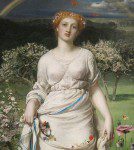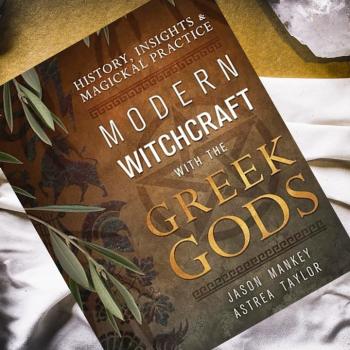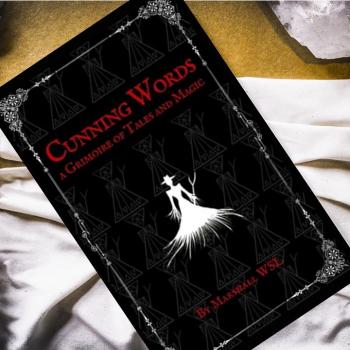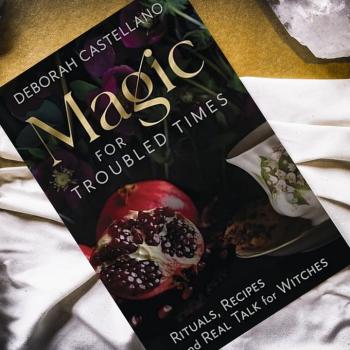
Cultural appropriation is something of a hot button issue in Paganism, but I personally believe that more often than not it remains largely misunderstood. Accusations of cultural appropriation abound, both from within Paganism and from the outside. However, I feel that frequently these accusations serve more as a means of shutting down conversation than of coming to an understanding of the actual appropriateness and legitimacy of cultural borrowing. To that end, I am setting out to explore the presence and impact of cultural appropriation within the Modern American Pagan community.
One of the real difficulties in understanding the ramifications of cultural appropriation for many Pagans, I believe, derives from Contemporary American Paganism’s demographic breakdown. According to Sarah M. Pike,
… the colorful diversity of Neopagan festivals and rituals masks the cultural uniformity of its members. Most Neopagans are middle class European Americas who are seeking alternatives to the Christianity, Judaism, or atheism of their parents … (2001, p. 123)
My own personal experience of Paganism–from meetups, rituals, and conventions, as well as online interactions–definitely seem to support this charge. While in many places across the United States, Pagans are repressed minorities, and therefore suffer at the hands of the larger culture, the majority of us still profit from our privilege in other areas of our life. We do need to be aware that while on the one hand we may suffer religious discrimination, we are still capable of exercising the privilege that we are awarded as a result of socio-economic, racial, and gender positions. Simply suffering from one form of oppression does not automatically allow us access to other oppressed groups and cultures through the bond of oppression. For many other minority groups, Contemporary American Pagans simply do not read as an oppressed group, but as members of the larger European American community that is the source of oppression and exploitation. The diversity of Pagan ritual and religious practice is often simply not reflected in the demographic breakdown of Modern American Paganism.
“The notion of a “global tribal culture” clearly expresses Neopagans’ desire to include diverse individuals and cultures in one community” (Pike, 2001, p. 35). Many Pagans seem to believe that all religious or spiritual techniques are available to them as spiritual seekers, partly as a result of the framing of Paganism as global tribe. Furthermore, the capitalistic nature of American culture often exacerbates eclecticism and cultural borrowing.
The approach to cultural eclecticism practiced by postmodern-styled Wiccan practitioners characters culture, rituals and artifacts as commodities. There is little or no relationship between the source of the material consumed, and the recipient who uses and interprets the material. The connections between the source of the material and the consumer is dissolved upon completion of the transaction. (Waldron, 2005, p. 42)
The risk in inherent in this type of thinking, despite the advantages that it may offer to the Pagan practitioner, lies in the hidden damage that it can do to the minority cultures from which Pagans borrow. This type of borrowing is also only possible because of the degree of privilege that many Pagans can exercise despite their own status as members of a minority religious movement. For example:
When non-Indigenous individuals and businesses reinterpret, reinvent and market culture for the benefit of New Age movements they place themselves in competition with Indigenous communities’ capacity to represent themselves to the broader community. (Waldron & Newton, 2012, p. 70)
The difficulties inherent in cultural borrowing emerge when minority voices are ignored or silenced even by well meaning members of the dominant group. By borrowing from Indigenous and Minority cultures, many Pagans are not only trading on their own cultural cache, but often also making it more difficult to actual members of those cultures to express their views. “Critics’ concerns over issues of cultural representation (or in this case, misrepresentation stem in part from their response to the broader culture that challenges the life and significance of their identity everyday through the mass media” (Pike, 2001, 137). Members of the Pagan and New Age communities need to be mindful when engaging in cultural borrowing that they are not eligible to speak for or represent those cultures. However, the act of borrowing itself, particularly when incorporated into a public spiritual space or ritual practice can overshadow the source of the borrowed material.
While, I do believe that the vast majority of legitimate cultural appropriation that occurs within the Pagan community is well intentioned, this does not erase the effect that it has on Indigenous and Minority communities. Cultural appropriation often reflects this in an almost good natured romanticism.
When Neopagans reject what middle-class white society has to offer, Native cultures come “to stand for authenticity and redemption.” Neopagans often assume, for instance, that most Non-Europeans cultures have more positive views about the body than Christian religions and that they value “feminine” qualities such as nurturing children more highly. (Pike, 2001, p. 146)
Many Pagans view Indigenous cultures in particular as representing and ideal sort of existence in close relationship with nature and the spirits. However, this view does not originate from within these Indigenous cultures, and is applied from the outside often as a form of critique of the dominant culture. This romanticization is hardly unique to Paganism, and has been present in European culture for hundreds of years.
What we may call romanticist idealization of Indigenous cultures as a model for utopian ideals, rituals and symbolic configurations has a long history in Western culture. Seventeenth-century cultural trends described the “noble savage” as evidence of the innate goodness of humanity in the perceived state of nature. Seventeenth- and eighteenth-century writers such as Gabriel de Foigny (1630-1692), Jonathan Swift (1667-1745), Denis Didérot (1713-1784), and Jean-Jacques Rousseau (1712-1778) commonly utilized primitivist and utopian notions of ‘natural Man’ based on descriptions of pagan societies living close to the earth. (Waldron & Newton, 2012, p. 68)
We, as Pagans, need to be aware of the cultural baggage that we carry with us from our presence in the larger American cultural community. Simply because we are Pagan does not mean that we have entirely removed ourselves from the effects of the larger culture. We need to be aware of the sources of our practices as well as their original contexts and meanings. Often times well meaning people borrow from other cultures in a way that strips the borrowed artifacts of their original purpose and understanding.
Cultural appropriation is a complex and nuanced issue that I intend to explore further. I hope, however, that this initial post has provided a foundation for a basic understanding to be further built off of. For the time being, I believe that it is of utmost importance that we, as Pagans, remain aware of the exercise of our privilege and of our own cultural background when we approach Indigenous and Minority cultures, particularly when in search of new spiritual techniques.
References:
Pike, S. M. (2001). Earthly bodies, magical selves: Contemporary pagans and the search for community. Berkeley and Los Angeles: University of California Press.
Waldron, D. (2005). Witchcraft for sale! commodity vs. community in the neopagan movement. Nova Religio, 9(1), 32-48.
Waldron, D., & Newton, J. (2012). Rethinking appropriation of the indigenous. Nova Religio, 16(2), 64-85. doi:http://dx.doi.org/10.1525/nr.2012.16.2.64
Syncretic Electric is published on alternate Fridays. Subscribe via RSS or e-mail!













